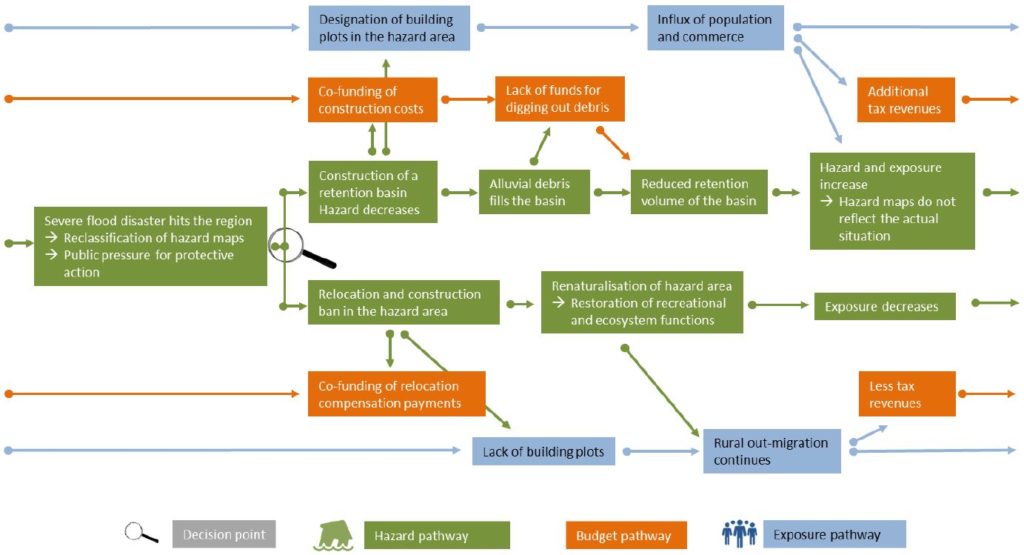Recent climate driven extreme hydro-meteorological events clearly show that substantial local government and community engagement for addressing the challenges posed by climate-related risks is needed. Current discourse evolves around the question how society’s resilience against future hazard events can be increased – not just by introducing smart technical solutions, but also by improving local decision-making processes.
Pathways contributes to answering this question by analysing the long-term development of decision-making arenas in which local adaptation policy evolves. These arenas are characterised by (1) competing interests from various policy areas, (2) ad-hoc decisions often taking precedence over strategic planning for long-term CRM, and (3) previous decisions providing carry-over, follow-up or even create lock-in effects for later decisions. Pathways paints a comprehensive picture of how local adaptation pathways were developed in the past, how these pathways led to specific decisions at specific points in time, and which impacts these choices had on community development with respect to the choices and pathways not taken. Pathways learns from the past to inform the future with the aim to provide capacity building at local level. By understanding how earlier decisions enabled or constrained later decisions, pathways offers policy guidance for making robust decisions in local CRM.
In order to improve decision-making processes in the future, we need to understand how derailments (could) happen, how they are embedded within climate governance agendas, and uncover how innovative approaches (can) get lost. To this end, pathways incorporates the preferences and vested interests various decision-makers hold with regard to climate risks by mapping how their perspectives entered specific local decisions. After the identification of major decision points, pathways analyses the key drivers (= pressure and release factors) as well as how power relations, interests and discourses between and among the involved stakeholders played out. Thus, pathways employs a stakeholder-centred perspective on risk governance, analysing how power, responsibility and policy outcomes are balanced and co-produced between governmental bodies and civil society – including the social, economic, and political framework conditions they are embedded in.
The project maps decision points in, and reciprocal interactions between, the following pathways, thereby integrating physical, economic and social processes (see figure below):
- Hazard pathway: The sequence of hazard events, the spatio-temporal distribution of hazards and risk mitigation measures, as well as the public risk discourse.
- Exposure pathway: The presence of risk elements (such as people or buildings) in hazard zones and their specific potential losses. Due to the spatial concentration of land uses, hazard exposure is not uniformly distributed in hazard areas and (generally) increases over time due to settlement growth in river basins. This also includes the impacts of demographic change, rural-urban migration, and economic cycles.
- Budget pathway: The sequence of revenues and expenses in public budgets, construction costs, and recurring

Taken together, pathways addresses the following research objectives:
- Reconstruct and evaluate how CRM is organised and planned at the local level and how according policy practices contribute to, or undercut national policy targets such as the Austrian Climate Change Adaptation Strategy and the #mission2030 Climate and Energy Strategy.
- Assess historical and ongoing local adaptation pathways in terms of their socio-economic, social cohesion/equity, climate risk and demographic change consequences with the aim to inform future adaptation pathways to promote an efficient transition to a climate resilience society.
- Provide novel insights into dynamic adaptation pathways to encourage the transformation of Austria to a climate resilient society by a policy-science dialogue.
